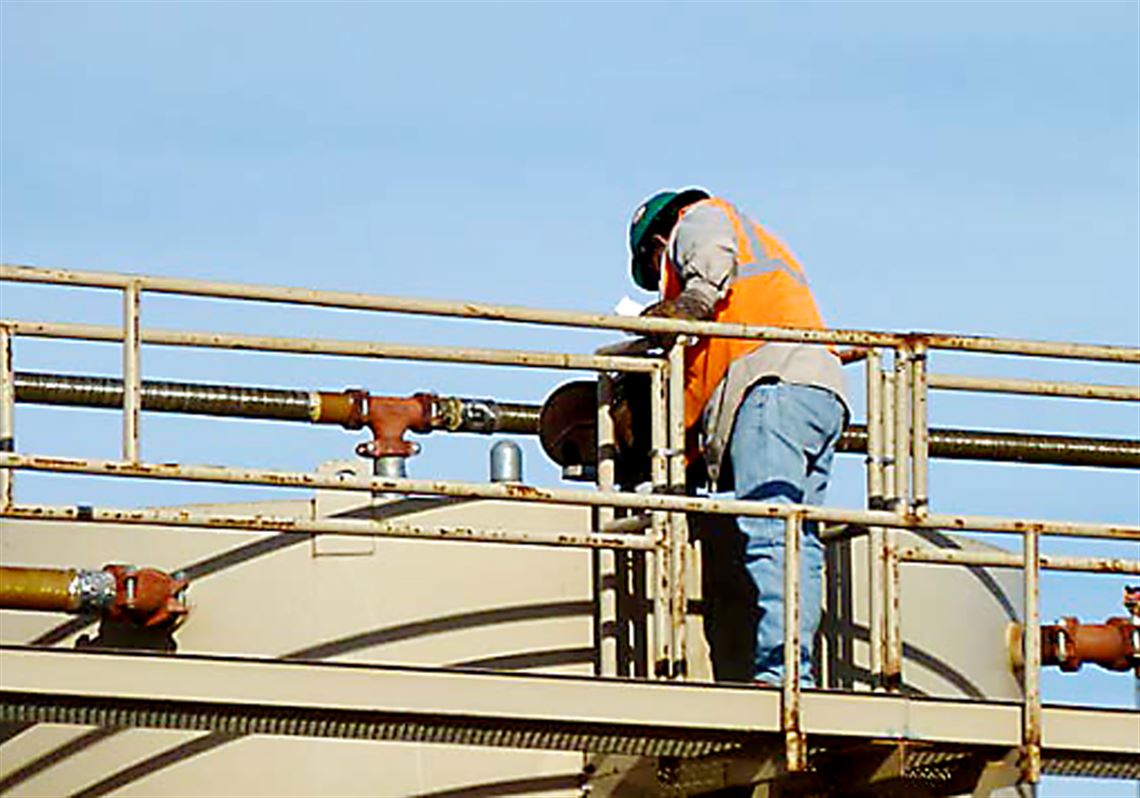Three weeks before a 59-year-old oil and gas worker was found collapsed over a tank in a Colorado oilfield in 2014, he felt so disoriented that he went to the emergency room. By the time he got there, his symptoms had subsided and he was discharged.
It wasn’t immediately clear what had happened, but a record of the gas monitor he wore as part of his job gauging oil tanks showed a five-minute period where the air around him was low on oxygen. So low — between 10 percent and 15 percent by volume — that he would have likely experienced poor coordination, fatigue and difficulty breathing within minutes.
The normal range of oxygen in the air is around 21 percent. Anything below 19.5 percent is considered oxygen deficient.
When the same worker was found dead over an open tank hatch three weeks after his doctor’s visit, his oxygen level had gotten as low as 7 percent.
The circumstances of his death and eight similar events in oil and gas fields over the past five years have been known in the industry for the past year. The National Institute for Occupational Safety and Health, a research arm of the Centers for Disease Control and Prevention, put out a tank hazard alert last year, and the topic has gained traction at industry conferences and among safety professionals.
Now, the researchers who linked these deaths to hydrocarbon exposure are reaching out to the medical community.
“Health and safety professionals need to recognize and act on nonfatal warning signs and symptoms, such as dizziness, confusion, immobility and collapse in oil and gas workers who might have been exposed to high concentrations of [hydrocarbon gas vapors] and to [oxygen]-deficient atmospheres,” they wrote in a paper published in the Mortality & Morbidity Weekly Report last week.
The researchers are targeting local and state epidemiologists and medical examiners who may be overlooking hydrocarbon exposure as a cause of death. Only three of the nine deaths examined by the researchers were ruled by coroners to have resulted from gas vapors. The others were attributed to heart disease.
For every death, many cases of near misses are likely to occur .
“We can’t quantify how often that happens, but we have heard anecdotally from workers that many, many — if not most who do this type of work — have experienced these types of symptoms, like dizziness and disorientation, before,” said Kyla Retzer, an epidemiologist with NIOSH’s Western States Office.
Long-term exposure to small doses of hydrocarbon gases is a concern, as well, as it can increase the risk of heart attack and cancer and liver, kidney and nervous system damage. In the short term, natural gas vapors from propane, butane and pentane can displace oxygen in the air, leading to the deficit.
Occupational health experts also suspect that some deaths involving fires, falls, crashes and mishandling of equipment have resulted from faulty judgement or “wooziness” associated with hydrocarbon vapor exposure, said Bernie Goldstein, emeritus professor at the University of Pittsburgh’s Graduate School of Public Health. But that underlying factor rarely shows up in fatality reports, he said.
Tank gauging is usually done by truck drivers, pumpers or well tenders who lift open the hatch of a storage tank to assess the level of liquid or to take a fluid sample. It’s a job done most often by men working alone, sometimes several times a day.
Ms. Retzer, her fellow researchers and industry partners have been drafting a list of risk factors that might increase the chance of hydrocarbon exposure. They hope to release that information sometime next month.
Condensate or natural gas liquids — a defining characteristic of Marcellus Shale gas in southwestern Pennsylvania and West Virginia — is among them. Another is a high gas-to-oil ratio, as found in the Utica Shale in Ohio.
While all nine of the cases discussed in the NIOSH study came from oil and gas fields west of Appalachia, Ms. Retzer said, the team is also looking into a death of a tank worker found in West Virginia last month to determine if it fits the pattern they’ve been studying.
There aren’t any crude oil tanks in Appalachia, but there are storage tanks holding natural gas liquids and produced water. All three types have the same hazards — natural gas vapors that sit on top of the liquid.
Another big risk factor on the list is vapor recovery units that don’t allow gases to vent from tanks into the atmosphere. In 2012, the U.S. Environmental Protection Agency mandated that all new tanks be outfitted with closed loop systems to remove the air pollution and global warming hazard associated with venting.
The rule inadvertently increased the danger to workers who manually gauge these tanks. The closed systems expose them to vapors that exist under greater pressure and gush out on release.
“When the [regulators] put that rule into place, that’s when everyone got really worried,” said Wayne Vanderhoof, president of RJR Safety Inc., a safety consulting company in Claysville, Washington County.
“Now it’s being kept in the tanks. Now it is a very serious consideration, a very serious potential hazard that we’re trying to address.”
Mr. Vanderhoof has made presentations to industry groups over the past year, highlighting NIOSH’s findings. He recommends that workers who have to open a hatch unhook it first and let it breathe a bit before swinging it open all the way.
Ms. Retzer said she has heard from people in the field that it could take more than 45 minutes for the air around the hatch to return to safe oxygen levels.
Mr. Vanderhoof suggests holding an air monitor to the opening to assess air quality. He also advises that workers stand straight, with arms extended toward the hatch, instead of slumping over the opening.
“The idea is to keep your face away from the hatch,” he said. “It doesn’t take a whole lot for your body to react and say, ‘I don’t have enough oxygen.’ It could take a few seconds.”
The ultimate solution that everyone — from Mr. Vanderhoof to Ms. Retzer, the federal government and industry safety organizations — is pushing is to automate the activity, thus taking the human element out of the gauging process.
Sensors that can monitor tank levels remotely and continuously already exist and are being implemented by companies throughout the U.S. and the Appalachian basin.
The most important thing to do to prevent hydrocarbon inhalation deaths or health hazards is to keep the hatch closed, Ms. Retzer said.
Anya Litvak: alitvak@post-gazette.com or 412-263-1455.
First Published: January 25, 2016, 5:00 a.m.













